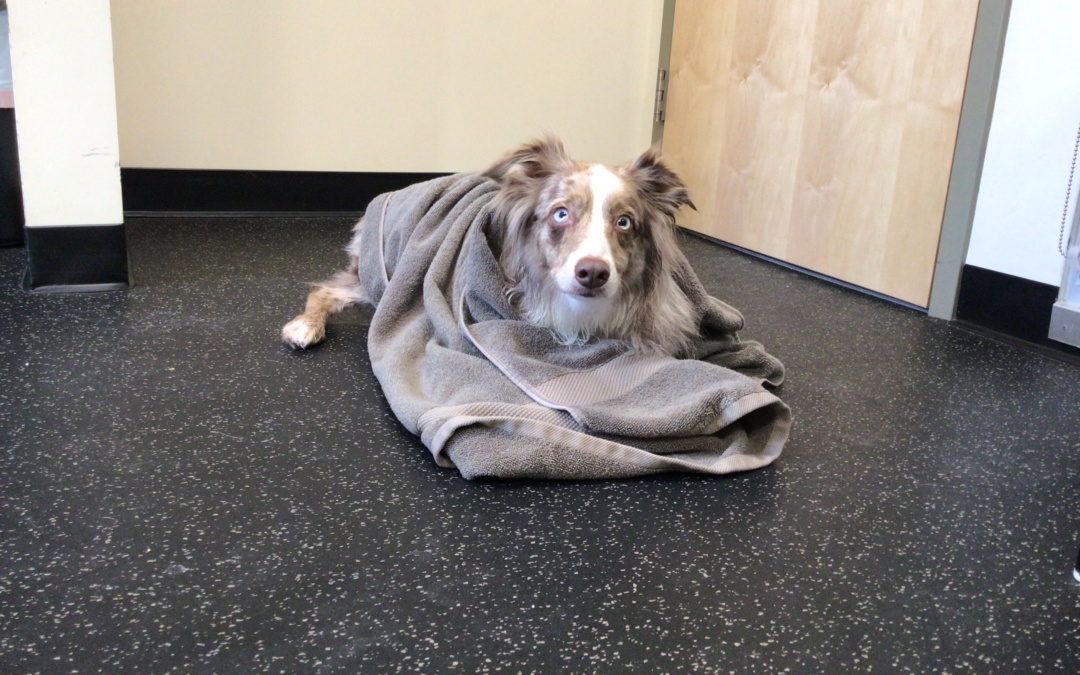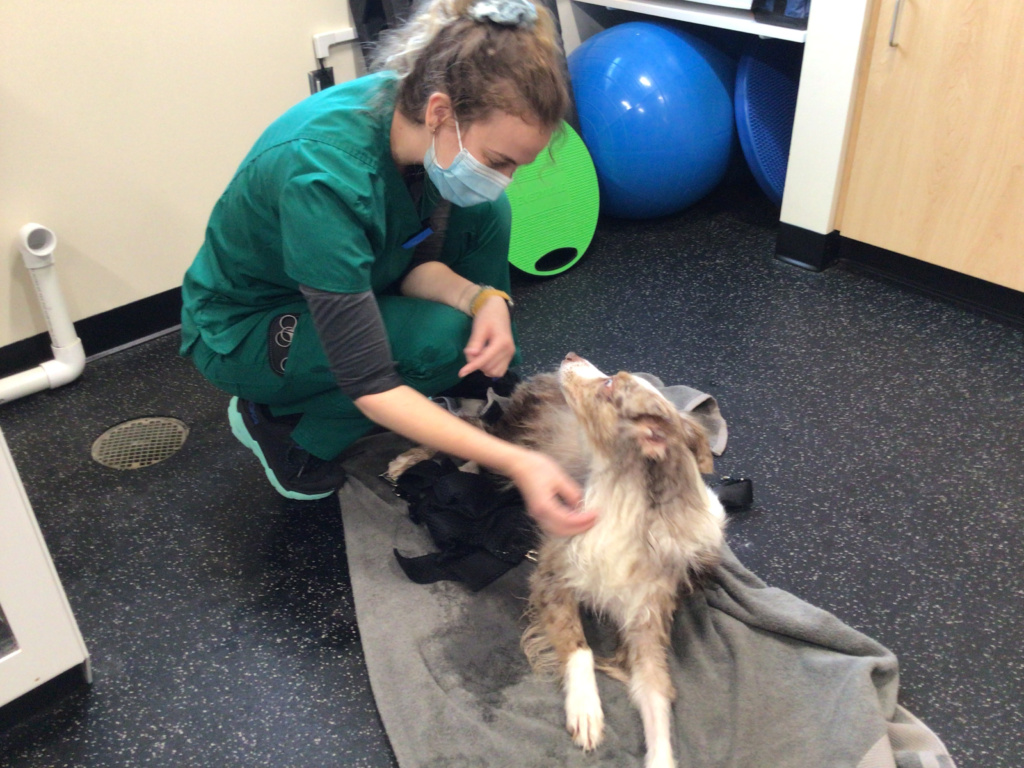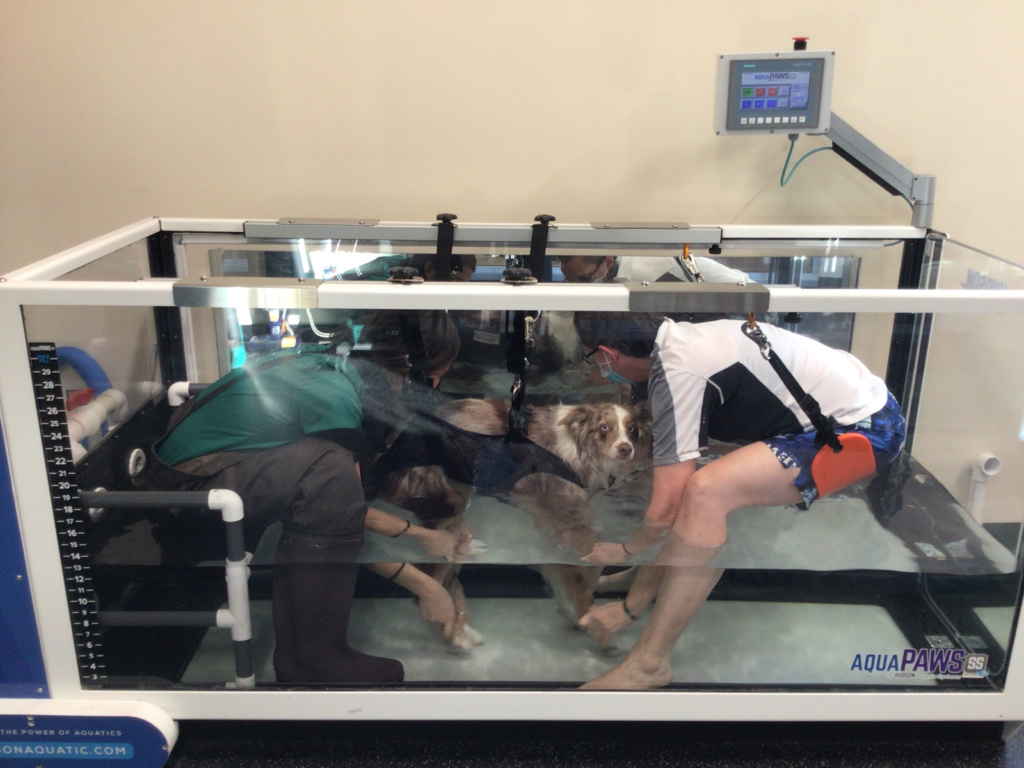Fenberry is not a cat, but she seems to be on her way to claiming nine lives, thanks to the team at BEVS.
This 6-year-old Australian Shepherd’s first brush with disaster was back in July 2019, when she suffered a near-drowning event. Her owner Maureen, a human nurse, resuscitated her and brought her to BEVS, where Dr. Amanda Rutter and our Emergency & Critical Care team was able to save her life.
Then, in December 2021, Fenberry collapsed and stopped breathing while playing on a walk. Maureen again resuscitated her and rushed her into BEVS’ ER where Dr. Megan Gibley, Dr. Jamie Peake, and the ER and ICU teams worked together to save her life again. The next day, our board-certified veterinary neurologist, Dr. Allison Cowan, performed an MRI. Fenberry was diagnosed with a spinal condition called acute noncompressive nucleus pulposus extrusion, C2/3. The condition affected all her limbs, so she was not able to stand or move (tetraparetic), so she was scheduled to begin physical rehabilitation to help her.
A few days after Fenberry was discharged, she returned to our Emergency Department as a transfer from her primary care veterinarian. Her appetite was decreased, and she had vomiting and diarrhea, so once again, Dr. Jamie Peake, Dr. Mallory Sullivan, Dr. Lisa Kiniry, Dr. Rutter, and our team of ER technicians and assistants worked on Fenberry again for several days. Still tetraparetic but improving, Fenberry was rechecked by Dr. Cowan and referred to begin rehab after one more week of rest.
On the day of her appointment with our Rehabilitation Department, Fenberry was examined by Dr. Pamela Levin, one of Vermont’s most highly trained pet rehabilitation veterinarians. Fenberry was unable to stand unassisted, consistently knuckling with her front legs, and could not even hold her head up or move it to the left. She began underwater treadmill sessions and laser treatments the following week. At first, Fenberry started in the underwater treadmill wearing a full body support harness and had two people assisting her to “walk” all four limbs. Gradually, she became strong enough for just a life jacket and assistance with only her two front legs.
After eight sessions (in just one month!) with Dr. Levin and her team, Fenberry was able to take her first steps walking on her own, first with a few steps in the treadmill unassisted. Then she walked from the rehab room to the front door of the building – all on her own!
Fenberry’s mom, Maureen, sent us this update a few weeks later:
“I took Fenberry for her first walk on the Williston bike path. I used her Help ‘Em Up® harness to give her support (primarily balance support). She was absolutely amazing! She went far and fast!! I could hardly keep up with her, at one point she was actually cantering! I made her go slow, too, so she was not using speed to make up for lack of balance. The wind was blowing her ear whispies, and she was in her glory. She did not want to turn around to head to the car, but my back was done for it! She is one amazing miracle girl. Thanks for all for all the hard work & expertise!”
As veterinary professionals, it’s patients like Fenberry who remind us of what is possible with knowledge, hard work, and love. We are so thankful that our team could work together to help her find her joy and her mobility again.



